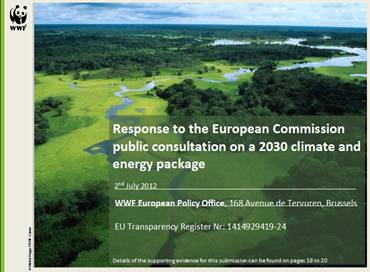About the study, Bloomberg wrote in February 2013: Shell today released new scenarios that explore two possible ways the 21st century could unfold, with dramatically different implications for society and the world's energy system. One scenario sees cleaner-burning natural gas becoming the most important energy source globally by the 2030s and early action to limit carbon dioxide emissions. The other sees solar becoming the top source by about 2070, but with slower action to address the threat of climate change.
The New Lens Scenarios, which look at trends in the economy, politics and energy as far ahead as 2100, underscore the critical role that government policies could play in shaping the future. "These scenarios show how the choices made by governments, businesses and individuals in the next few years will have a major impact on the way the future unfolds," said Chief Executive Officer Peter Voser. "They highlight the need for business and government to find new ways to collaborate, fostering policies that promote the development and use of cleaner energy, and improve energy efficiency."
With the world's population headed toward 9.5 billion by 2060 and the rapid growth of emerging economies lifting millions of people out of poverty for the first time, the scenarios project that world energy demand could double over the next 50 years.
Called Mountains and Oceans, Shell's scenarios explore two plausible future pathways for society. Each scenario dives into the implications for the pace of global economic development, the types of energy we use to power our lives and the growth in greenhouse gas emissions. The scenarios look further into the future than many other outlooks and highlight some surprising possible developments. Both see global emissions of carbon dioxide (CO2) dropping to near zero by 2100. One factor is increasing use of technology that takes CO2 out of the atmosphere, for instance by burning biomass to produce electricity, and then storing emissions underground. Although the Oceans scenario sees a dramatic increase in solar power, it also envisions greater fossil fuel use and higher total CO2 emissions over the century than the Mountains scenario, which will likely have more impact on the world's climate.
The scenarios highlight areas of public policy likely to have the greatest influence on the development of cleaner fuels and renewables, improvements in energy efficiency and on moderating greenhouse gas emissions. They include:
* Measures to promote the development of compact, energy-efficient cities, particularly in Asia and other rapidly urbanising parts of the world.
* Mandates for greater efficiency in areas such as transportation and buildings.
* Policies to encourage the safe development of the world's abundant supply of cleaner-burning natural gas -- and to promote its wider use in power generation, transport and other areas.
* A price on CO2 emissions and other incentives to speed the adoption of technologies to manage emissions, particularly carbon capture and storage (CCS).
Mountains
The Mountains scenario imagines a world of more moderate economic development in which policy plays an important role in shaping the world's energy system and environmental pathway. Cleaner-burning natural gas becomes the backbone of the world's energy system, in many places replacing coal as a fuel for power generation and seeing wider use in transport.
A profound shift in the transportation sector sees global demand for oil peaking in about 2035. By the end of the century, cars and trucks powered by electricity and hydrogen could dominate the road. Technology to capture carbon dioxide emissions from power stations, refineries and other industrial installations becomes widely used, helping to reduce CO2 emissions from the power sector to zero by 2060. Another factor is the growth of nuclear power in global electricity generation. Its market share increases by around 25% in the period to 2060.
With these changes to the energy system, greenhouse gas emissions begin to fall after 2030. Nevertheless, emissions remain on a trajectory to overshoot the target of limiting global temperatures rise to 2 degrees Celsius.
Oceans
The Oceans scenario envisions a more prosperous, volatile world with an energy landscape shaped mostly by market forces and civil society, with government policy playing a less prominent role. Public resistance and the slow adoption of both policies and technology limit the development of nuclear power and restrict the growth of natural gas outside North America. Coal remains widely used in power generation until at least the middle of the century.
Without strong support from policymakers, carbon capture and storage catches on slowly. By mid-century CCS captures only about 10% of emissions, growing to about 25% in 2075. This slow uptake is the main reason electricity generation becomes carbon-neutral some 30 years later in the Oceans scenario than in the Mountains scenario.
Higher energy prices encourage the development of hard-to-reach oil resources, as well as the expansion of biofuel production. Oil demand continues to grow through the 20s and 30s, reaching a plateau after 2040. Liquid fuels still account for about 70% of road passenger travel by mid-century.
High prices also spur strong efficiency gains and the development of solar power. By 2070, solar photovoltaic panels become the world's largest primary source of energy. Wind energy expands at a slower pace, due to public opposition to large installations of wind turbines. Elevated demand for coal and oil, a lack of support for CCS and less natural gas development outside of North America contributes to about 25% higher total greenhouse gas emissions than in the Mountains scenario.
To explore Mountains and Oceans in more detail, download Shell's New Lens Scenarios at http://www.shell.com/scenarios .
Shell has a 40-year history of using scenario planning to explore possible future landscapes and aid strategic decision-making. The latest publication continues a tradition of sharing summaries of the scenarios to contribute to the public debate about possible ways to tackle some of society's long-term challenges.
|

